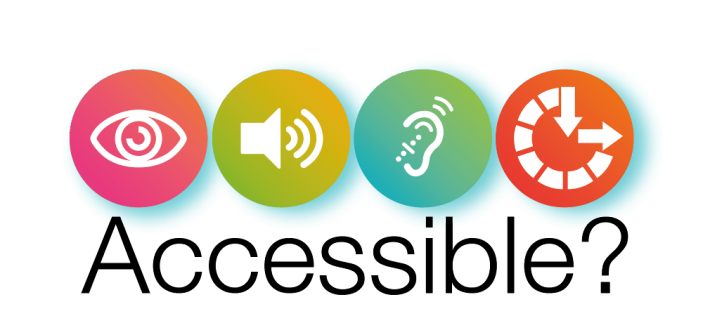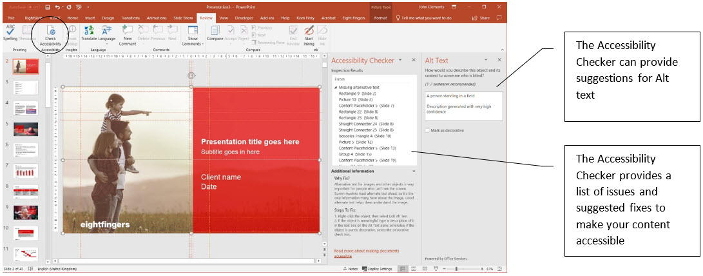
More than 1 billion people in the world are living with a disability
(WHO & World Bank estimates)
With that in mind
- Are your documents, presentations and emails accessible to people with disabilities using screen readers and assistive technology?
- Do you know if the recipients of your documents and presentations are excluded from using them due to how they have been produced?
In some cases, it’s now a requirement for documents and presentations to be made accessible for compliance purposes. Accessibility is important, but it’s often overlooked. You could also be ignoring a large audience who might become your customers.
So, what can be done?
A lot
Accessibility extends into so many areas, including the design of products, devices, services and environments for people with disabilities. In this article, I’m going to focus on just one area, documents and presentations.
There is some great assistive technology available that can help people with different abilities to read and author documents. But to make full use of it, the documents and presentations that you create need to be structured properly.
The good news is that there are tools to help you do this available right there on your PC, built into the software that you use every day. For example, did you know that by adding some ALT text to pictures in your presentations, the content will make much more sense to a blind person, and setting this up involves just a couple of clicks of the mouse.
AI is also beginning to play an important part, making it easier for you to create accessible content. For example, PowerPoint can now provide suggestions for the Alt text that is used to best describe a picture on a slide for someone who is blind.
If like most people in business, you use Microsoft Office applications to write documents, create presentations or send emails, spending just a little more time on preparation could have a huge effect on your target audience, increasing the number of people who will benefit from your hard work.
It’s not possible to cover all of the options in this post. But as a start, I’ve included some notes below and links to some very useful resources containing tips, notes and guides.
So where to start?
First check your documents – if you are using Microsoft Word or PowerPoint, these already have a built in Accessibility Checker which will interrogate your documents and provide details about any issues and how to fix them to make your document more accessible.

The Accessibility Checker verifies your file against a set of rules that identify possible issues for people who have disabilities. Depending on how severe the issue is, the Accessibility Checker classifies each issue as an error, warning, or tip.
-
- Error. Content that makes the document difficult or impossible to read and understand for people with disabilities
- Warning. Content that in most (but not all) cases makes the document difficult to understand for people with disabilities
- Tip. Content that people with disabilities can understand but that could be presented in a different way to improve the user’s experience
A detailed description of each of the above can be found on Microsoft’s support website:
Rules for the accessibility checker. Guidance from Microsoft
And you can find out how to use the accessibility checker in Microsoft Office applications by following these links:
Microsoft Word
Checking Document accessibility in Microsoft Word
PowerPoint also includes the Accessibility Checker, plus there are some best practice tips for accessibility here:
Make your PowerPoint presentations accessible to people with disabilities
If you would also like to ensure that your emails are accessible, the following link provides some useful tips:
Tips for making your email content accessible
And a really good resource for more detail about accessibility can be found on the GOV.UK website:
Guidance for creating accessible communication formats
Summary
Hopefully this article will encourage content producers and in particular Microsoft Office users, to adopt accessibility techniques into their work.
Introducing techniques for making your content accessible, will not only benefit the users of assistive technology, it can have a direct impact on your business, both in terms of reach and ROI.
It’s becoming much more common now for good template designers and developers to provide accessible templates, helping to increase the coverage for content producers and reduce the number of people excluded from being able to use content. Some firms also provide an accessible document remediation service, taking existing content and making it accessible.
At Meta One, our expert team of template designers and developers are always happy to review documents, presentations and templates to provide help with accessibility, and if required help build well-structured accessible content for your organisation.

